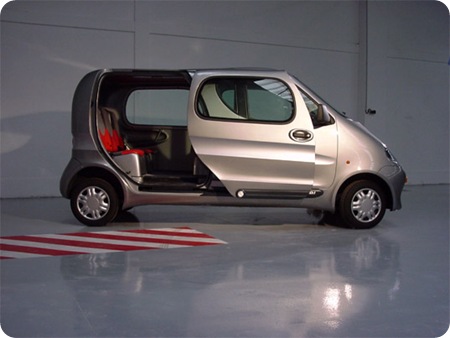The increasing use of high-end software in automobile design and R&D has made Indian auto majors leverage the country's software prowess and gain an edge over their European and American competitors.
Most are expanding their research and design services either organically or by acquisitions, which will enable them to launch newer models in the market quickly and efficiently in the coming years.
By June 2009, the $6 billion Mahindra & Mahindra group (M&M) will open its new $116 million automobile design and development facility called the Mahindra Research Valley (MRV) spread over 150 acres in Mahindra World City in Chennai. Primarily, this R&D facility will cater to M&M's design needs, and later may consider doing similar high-end work for other OEMs.
Tata Motors has six R&D centres that span India, South Korea, Spain and the UK. In 2006, the Tatas acquired INCAT – now an arm of Tata Technologies – that conducts specialised R&D work for the Tata Group and others. Recently, Tata Motors bought a minority stake in Italian car design firm, Pininfarina, which has designed some landmark Ferraris.
In April this year, French major Dassault Systemes tied up with Argentum Engineering Design's (AED) Centre for Excellence to train automobile engineers who would design, test, validate and manufacture new vehicle models for domestic and international OEMs.
According to a Nasscom report, the automobile and aerospace design industry is currently estimated at $ 144 billion, in which India's current share is valued between $3 billion and $5 billion annually.
This amount is estimated to increase to around $16 billion over the next two to three years. Global spending on engineering services is expected to touch $1.1 trillion by 2020.
Outsourcing to India will touch over $ 50 billion by then.
High-end software like 3D, PLM, and V5 provided by software majors like Dassault Systemes, Siemens and IBM have revolutionised the way new models of vehicles are designed, tested, and manufactured. The advantages of using Indian software talent are obviously in costs. Indian engineering talent is 45 per cent cheaper than an American counterpart.
The savings in time and money gained by using high-end software are also obvious. "We are aware of anything between 25 and 40 per cent savings in time achieved by auto majors when launching a ‘concept to manufacture' programme," said Vivek Marwah, country marketing head, Siemens PLM.
In high performance motorsport, where turnaround time is essential, applications like PLM have reduced design time. Toyota Motorsport uses Dassault Systemes' PLM solutions to reduce aerodynamics design time by 80 per cent and achieve the first-physical assembly of the car in only two days, compared to three weeks previously. For an F1 racing team, time saved off the track is crucial.
Costs saved in building and testing models are equally substantial. "Earlier, we used to build 50 vehicles for crash tests. Now after using virtual crash tests, we use only about 40 units," explains Dr Arun Jaura, chief technology officer, Mahindra & Mahindra.
The costs saved in tests like these vary depending upon the skill sets of engineers and the country's regulatory agency requirements. Another testing expert said most new car models launched in Europe now undergo only one physical crash test, while the rest are simulated. The costs of constructing test prototypes can be enormous.
Despite a significant amount of contribution from Indian engineers in the development of models like the Swift, Dzire and SX4, Maruti Suzuki still relies on Suzuki, Japan for training its engineers, though the automaker plans to increase its R&D strength to 1,000 by 2010.
And players like Argentum hope to offer the same in India through its tie-up with France's Dassault Systemes. "Through this tie-up, we hope to train engineers who will produce engineering solutions, and not software people to do the same," said S D Pradhan, CEO, Argentum Engineering Design.
Currently, India enjoys a reputation as a provider of low-end research work that revolve around small cars. The current challenge is to change that perception. "The country has had a reputation for low-end design work. In setting up the Mahindra Research Valley, we would demonstrate to become the epicentre of engineering design and development for high-end work. We have the potential," said Dr Jaura.
India's journey to becoming the world's hub for automobile design and development may not be easy. "Opportunities are plenty, but competition abounds. China, Latin America, East Europe... each one with certain natural advantages," said R Srinivasan, executive vice-president, Avtec, a Hindustan Motors subsidiary.









![[insert caption here] [insert caption here]](http://www.voanews.com/english/images/thibodeaux_india_electric_car_08aug08_190.jpg)


